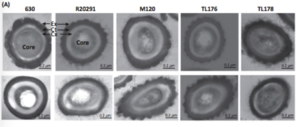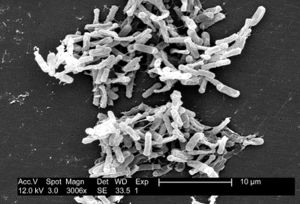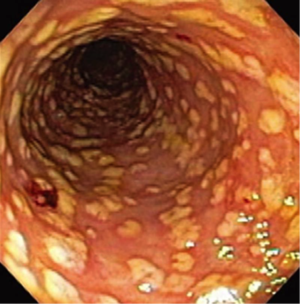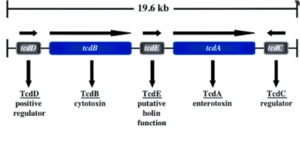Clostridium difficile infection and fecal bacteriotherapy: Difference between revisions
No edit summary |
|||
| Line 27: | Line 27: | ||
[1] Nazarko, L. (2015). Infection control: Clostridium difficile. British Journal Of Healthcare Assistants, 9(1), 20-25. | [1] Nazarko, L. (2015). Infection control: Clostridium difficile. British Journal Of Healthcare Assistants, 9(1), 20-25. | ||
Andres F Carrion et al. “Severe colitis associated with docetaxel use: a report of four cases,” World Journal of Gastrointestinal Oncology, 10 (2010): 390-394, accessed April 17, 2015, doi: 10.4251/wjgo.v2.i10.390. | |||
Daniel E. Voth and Jimmy D. Ballard, “Clostridium difficile Toxins: Mechanism of Action and Role in Disease,” Clinical Microbiology Reviews 18 (2005): 249-263, date accessed April 19, 2015, doi: 10.1128/CMR.18.2.247-263.2005. | |||
Daniel Paredes-Sabja et al. “Clostridium difficile spore biology: sporulation, germination, and spore structural proteins,” Trends in Microbiology 22 (2014): 406, accessed April 15, 2015, doi: 10.1016/j.tim.2014.04.003. | |||
Revision as of 03:45, 21 April 2015
Introduction
By Rebecca Varnell

Introduce the topic of your paper. What microorganisms are of interest? Habitat? Applications for medicine and/or environment?
Section 1
Include some current research, with at least one figure showing data.
Section 2
Include some current research, with at least one figure showing data.
Section 3
Include some current research, with at least one figure showing data.
References
[1] Nazarko, L. (2015). Infection control: Clostridium difficile. British Journal Of Healthcare Assistants, 9(1), 20-25.
Andres F Carrion et al. “Severe colitis associated with docetaxel use: a report of four cases,” World Journal of Gastrointestinal Oncology, 10 (2010): 390-394, accessed April 17, 2015, doi: 10.4251/wjgo.v2.i10.390.
Daniel E. Voth and Jimmy D. Ballard, “Clostridium difficile Toxins: Mechanism of Action and Role in Disease,” Clinical Microbiology Reviews 18 (2005): 249-263, date accessed April 19, 2015, doi: 10.1128/CMR.18.2.247-263.2005.
Daniel Paredes-Sabja et al. “Clostridium difficile spore biology: sporulation, germination, and spore structural proteins,” Trends in Microbiology 22 (2014): 406, accessed April 15, 2015, doi: 10.1016/j.tim.2014.04.003.



